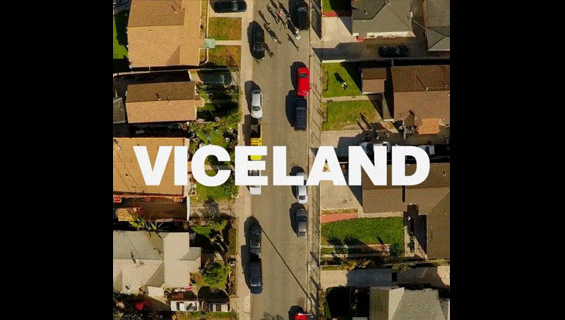Vice flipped the switch on Viceland this week—diving into the unknown as the only digital media company with its own cable channel—while other digital publishers lie in wait to see if the network’s combination of native advertising and in-house original programming aimed at millennials is a model worth imitating.
“They are in a position to completely rewrite the rules of a startup network,” Linda Ong, CEO of media branding consultancy TruthCo., and part of the team that launched Oxygen in 2000, told Broadcasting and Cable. “Vice is in completely uncharted territory.”
RELATED: Viceland Makes Its Debut
Less Commercial Clutter, More Custom Content
Fueled by a $250 million investment from A+E Networks, Viceland wants to limit traditional six-minute pods of 30-second spots, and focus instead on custom ads and content marketing that work both on air and across digital platforms. Viceland will have only eight minutes of national ad time and two minutes of local ad time every hour.
“We realized we had an opportunity because we were starting from scratch as a network to shake up the ad approach in a couple of ways,” Viceland General Manager Guy Slattery (and PromaxBDA board member) told AdWeek.
As other media companies such as Turner are adapting to the changing TV landscape by cutting back on ad loads, on truTV and in new TNT dramas for instance, Slattery said Viceland has established a reduced ad model right from the get-go.
“You’ve seen all the big networks talk about reducing ad loads, but in reality, they find it difficult to do that because they have 16 minutes [of ads per hour] and every time they reduce, it’s taking money out of their pocket,” Slattery said.
While Viceland will still include 30-second spots, understanding advertisers often put a lot of work into them as part of national campaigns, the network also plans to create accompanying custom content that is “much more likely to be viewed, and much more likely to have higher recall, which we think is better for them in the long term,” Slattery said.
Viceland is hoping native ads will account for half its ad inventory within a year.
RELATED: How Vice Is Trying To Reinvent The TV Ad Model for Millennials
Focus on Original Programming
In addition to shaking things up on the advertising front, Viceland has also entered the TV marketplace with a completely original slate of programs, most created in-house and many of them offshoots of popular digital series.
Viceland’s eight offering so far include Ellen Page’s Gaycation, in which the actress and her friend Ian Daniel travel around the world to experience gay and lesbian cultures in different countries, and F*ck That’s Delicious, featuring rapper Action Bronson trying food in cities where he’s touring.
Other shows are Weediquette, which digs into the burgeoning legal marijuana industry; Flophouse, a sort of reality show about aspiring comics living and performing together; and Balls Deep, a jump into interesting subcultures.
RELATED: As Viceland Prepares to Debut, Here’s a Look at Some of Its Shows
The series cover a variety of topics, but share an auteur-style host offering a unique perspective.
“That’s something that really differentials this network,” Slattery told Broadcasting and Cable. “It’s very human, very personal. Each show has a filmmaker behind it with a distinct voice.”
On that note, led by Oscar-winning filmmaker and Viceland co-president Spike Jonze and CEO Shane Smith, the network kicked off it’s February 29 launch with 13 hours of footage of executives listening to voicemails from would-be viewers.
“It just happened when we realized how interesting these voicemails were.” Smith told the Associated Press.
Vice was born as a Canadian punk rock magazine that Smith grew into a $4 billion entertainment company. Its most well-known for its millennial-targeted news show, Vice, which airs on HBO. Viceland, which is taking over for A+E Networks’ H2, is like that show on steroids.
It’s also reticent of former Vice President Al Gore’s crowd-sourced network, Current, which ultimately became Al Jazeera America, which is soon to fade to black.
While Vice has developed a robust online audience, the challenge remains to see if Viceland can carry many of those non-linear digital viewers over to television, where advertising is more lucrative and the audience potentially larger.
More Digital Companies Eying Cable Channels
Viceland isn’t the only digital media company waiting to see how this all plays out.
Vox Media President Marty Moe told Ad Age he sees digital players as real participants in the TV market, and that “we bring the ability to create a new generation of television programming for a new generation of digital television consumers.”
Refinery29 CEO Justin Stefano said Viceland’s success could open doors for the digital media industry.
“We’re pulling, we’re like really cheering from the sidelines for this Viceland thing, really hoping it works out, because it will be a really great precedent for lots of digital companies that want to get in and do stuff in the television space,” Stefano said.
There’s no doubt that television is a hard business, and a different animal altogether from digital. As Broadcasting & Cable’s aptly headlined article “Launch a Network? F—k, That’s Difficult,” points out, there are risks involved in making that transition.
“The No. 1 questions is, is the brand quality enough to get people to check it out, to come along for the ride?” Ong asked.
Stefano puts it more bluntly, saying the transition into television can make or break a company.
“[It] can be the thing that … [catapults] you into like the stratosphere in terms of the value of your business,” he said. “If you don’t don‘t do it well, it can also be the anchor that drags you to the bottom of the ocean.”
Tags:













































__twocolumncontent.jpg)











